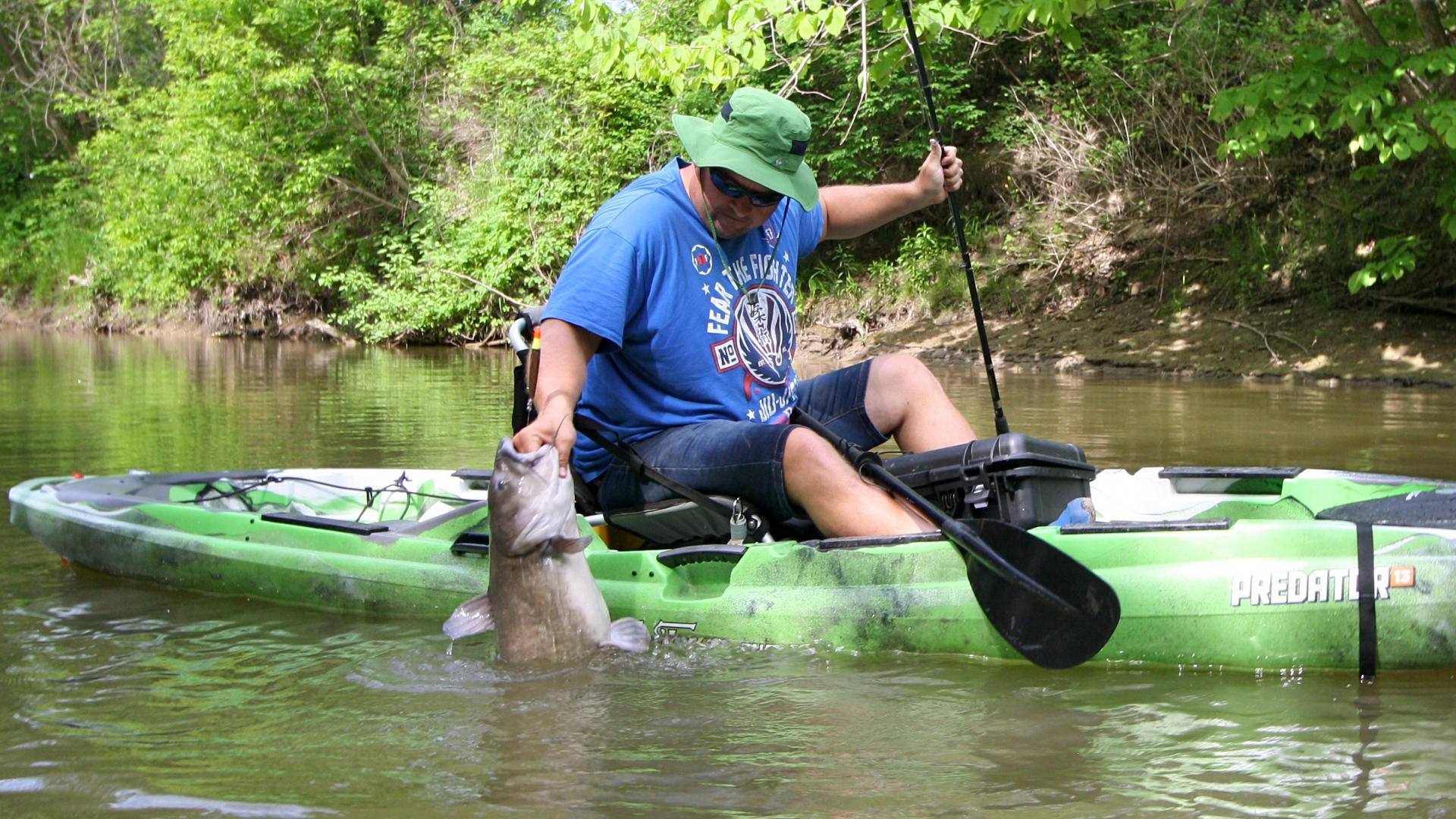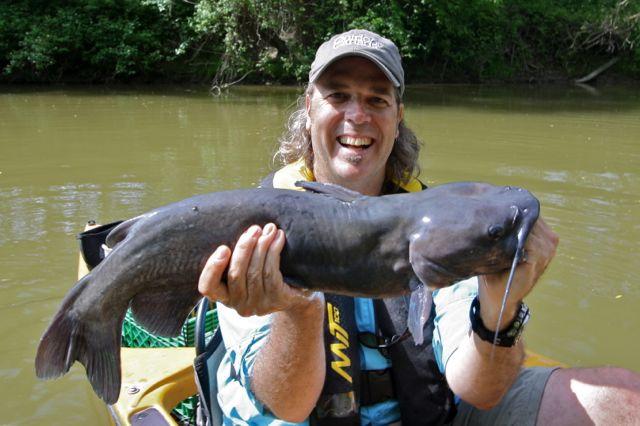CAT FIGHT
Small boats in small water can put you on very big fish
Advertisement
TECHNIQUE
I paddle the river until I reach a prime corner hole or logjam, then lob out my bait and let my kayak drift along at the same pace as the float, sometimes even right alongside it. If the bait is at the right depth, the float will occasionally slow or wobble as it touches the bottom, but if it moves significantly, you’ve got a cat. Sometimes it disappears straight down, but more often it will move to the side. Whatever happens, set the hook hard and get ready for a fight.
The best way to land a cat is with a big net. But if you have to land one of these fish by hand, firmly grip its lower lip with your four fingers inside its mouth and your thumb on the underside of the lower jaw (above). Catfish have tremendously strong jaws, so if you grip the fish bass-style by putting your thumb in its mouth, it can clamp down and do some real damage. With your whole hand in its mouth, however, the fish can’t fully bite. A big channel cat’s sandpaper-like teeth may scratch your knuckles a bit, but consider that a badge of honour after tussling with one of these small-creek giants.
Advertisement
CATS ON THE MENU
Channel catfish are abundant and often under-fished, so I like to keep a couple of smaller fish—under six pounds—for the table. Cat fillets are boneless, with a flaky white flesh that makes for some of the best fresh fish you’ll ever taste. When filleting, just be sure to remove the line of red flesh (or mud line) down the centre. I especially like to blacken cat fillets with Cajun spices or marinate them in jerk sauce, then grill them on the barbecue.



